Here’s the thing: the question of where to invest and what to invest in is never static. There’s no single answer, just like there’s no one way to do things. The properties you acquire and the decisions you make will depend on your investment goals.
That doesn’t mean there aren’t some commonalities that point towards what will maximize your returns and what will keep you stagnant.
If you’re an experienced investor, you know that market conditions shift, financing options evolve, and so do the properties themselves. If you’re an aspiring investor, we want you to know that one of the most strategic decisions you will face is whether to target newer construction properties over older, established rentals.
So, let’s talk about that important question. Which property type will make you more money?
On the surface, newer properties may seem more expensive. You’ll need more capital to buy them, and there may be less room for negotiation in the price. But if you dig a little deeper, you might find that those newer properties offer long-term advantages that can significantly boost your overall return on investment (ROI).
Newer properties typically require less immediate maintenance, are built to modern codes, and appeal to a broader range of quality tenants willing to pay a premium for updated amenities and energy-efficient systems. They may also carry fewer hidden risks, like outdated wiring, aging roofs, or deferred structural issues, all things that we have seen erode investor profits over time.
But, newer doesn’t always mean better. We have been managing properties for investors for a long time, and we know that everything is subject to change and interpretation. Investors must weigh upfront costs, location dynamics, rent potential, and long-term appreciation to determine whether newer construction aligns with their portfolio goals and risk tolerance.
We get a lot of questions about this, so we decided to break down the real risks and advantages behind newer properties. We are taking a look at how they affect cash flow, tax strategy, depreciation, maintenance costs, and tenant retention. Whether you’re expanding your portfolio or considering your first income property, let the talented team at Krystle Properties help you assess whether newer is truly smarter for your investment goals.
Rental Value and Its Impact on Cash Flow
Rental values tend to trend higher for newer rental properties than for older homes. This is one of the most pressing and immediate advantages in buying a property that’s been constructed in the last five or 10 years.
It’s easy to understand why you’ll price your property a bit higher when it’s new. Tenants get modern, beautiful finishes, energy-efficient systems, and up-to-date layouts. These things are highly appealing to renters, particularly in competitive markets like Benicia and throughout Solano County.
This means you’ll invest less money preparing the property for the rental market. You won’t need to renovate a kitchen that looks like it belongs in the 1980s, for example.
Instead, you’ll be investing in a rental home that’s essentially ready to rent. Saving time on your preparations for the market will mean that rent is not only higher, but it comes in a lot faster than if you have to spend months tearing up old carpet and dated counters or fixing a deteriorating roof. Most new properties are turn-key and in great condition. That’s what gives your new rental home a higher price tag.
This is a matter of supply and demand. Renters, especially well-qualified renters, are often willing to pay more for modern elements in their rental home, including:
- Energy-efficient or stainless appliances
- Open floor plans ideal for entertaining
- Smart home features such as keyless entry systems and smart thermostats
- Lower utility bills that come with more energy efficient new homes
You might pay more for the new rental property but consider the extra $500 you could potentially earn per month in rent over an older home with less to offer and more to repair. That’s $6,000 more in annual earnings, which can make a substantial impact on your ROI, especially in multi-unit investments.
There is Also the Matter of Rent Control
Invest in a single-family home, and you’re likely to be exempt from the statewide rent control laws in California anyway. But if you’re buying a multi-family property that’s less than 15 years old, you have an added incentive when it comes to rental value. You’re exempt from the existing rent control limits. This is a factor that can make a major difference in long-term profitability and cost efficiency for investors. Under California’s Tenant Protection Act of 2019 (AB 1482), most rental properties are subject to annual rent increase caps (currently limited to 5% plus inflation, with a maximum of 10% per year). However, new construction properties that received a certificate of occupancy within the last 15 years are exempt from these restrictions. That means if you invest in a newly built property, you can adjust rents based on market conditions without being locked into state-imposed limits. This exemption provides a valuable layer of flexibility in managing cash flow and adjusting rents to keep pace with rising expenses. For example, if property taxes, insurance, and maintenance costs increase, owners of newer properties can more easily raise rents to maintain profitability, which is something rent-controlled units often can’t accommodate. This exemption from rent control means less regulatory burden, too. Owners don’t have to navigate complex just-cause eviction rules or additional local restrictions that apply to rent-controlled units. This reduces legal risk, compliance costs, and the administrative headaches of operating in a tightly regulated environment. Over time, this freedom translates into higher income potential, better alignment with market demand, and the ability to protect your investment against inflation. For investors seeking a balance between risk, return, and operational simplicity, a newer construction rental can be a more cost-effective and strategic option for this very reason, especially when compared to older buildings constrained by California’s evolving rent control restrictions. |
Repair and Maintenance Costs: Lower for New Properties
Maintenance costs are disruptive, especially when they’re unpredictable.
Things are bound to breakdown, even with a new property. Maintenance is always going to be a line item in your budget, and you’ll always need a reserve to cover those costs, no matter what kind of rental property you own.
Smart investors are prepared to pay for those repairs and replacements, but when maintenance emergencies become more frequent and repairs are suddenly less common than replacements, it’s likely due, at least in part, to the age of your property.
With older properties, you might find there are more surprise expenses. You could be dealing with outdated plumbing, worn HVAC systems, and roofing that’s near the end of its life. These issues can be difficult when it comes to maximizing your cash flow. If you’ve just bought the property, it may even delay your ability to collect rental income.
What do newer properties provide investors that older properties don’t, in terms of maintenance?
| Fewer Immediate Repairs Needed
Newer properties are built with brand-new materials and systems, including modern plumbing, electrical, HVAC, and roofing. This means you’re far less likely to face surprise repairs in the first several years. This reduces upfront maintenance costs and helps stabilize cash flow early in ownership. |
Builder Warranties
Most new construction properties come with builder warranties that cover structural elements, appliances, and major systems for several years. These warranties can save investors thousands in potential repair or replacement costs if issues arise during the warranty period. |
| Modern, Durable Materials
Newer properties are constructed with low-maintenance, energy-efficient materials like composite siding, vinyl windows, and longer-lasting roofing. These features are designed to withstand wear and tear better than outdated materials found in older homes, reducing long-term maintenance needs. |
Up-to-Code Infrastructure
New construction meets the latest building codes and safety standards, which means fewer code violations, inspection issues, or insurance complications. Investors avoid the costly upgrades often required to bring older properties up to code, particularly in cities with strict enforcement. |
While all properties require maintenance, the predictability and lower upfront costs with newer buildings make budgeting far easier and safer.
Attracting and Retaining Tenants
 Do tenants really prefer newer homes over older properties?
Do tenants really prefer newer homes over older properties?
We have spent many years working with tenants. We get to know them when they’re looking for a home, we work closely with them when they’re renting a home that’s managed by our team, and we talk to them about where they’re going and why they’re leaving when the lease has ended and they decide to move on.
At Krystle Properties, we know what tenants are looking for, and the overwhelming majority of them are looking for modern living spaces. Some tenants are specifically looking for historic neighborhoods or older buildings for their charm. But in general, they want convenience, style, and amenities. The tenants looking for homes today are less likely to be charmed by older homes.
Newer properties are appealing to tenants because of details such as:
- Open floor plans. Older homes often have walls separating kitchens from living rooms, making the property feel far more claustrophobic and the rooms feeling more separated from one another. Today’s tenants like a modern floor plan that flows easily from one space to another.
- In-unit laundry. Not a lot of older units have washers and dryers in them. Tenants want to be able to do laundry in the privacy of their own home, even if they’re renting an apartment. These modern features are much easier to find (or install) in a newer home or building.
- Smart home tech. The demand for smart home technology has grown over the last year or two. It’s now an expectation that there will be a keyless entry system, a smart thermostat, and all the ease and convenience that come with modern features inside of the home.
- Community amenities in multi-family homes like gyms, package lockers, and pet-friendly spaces.
When you know what tenants are looking for and you can provide them, you’ll rent the property faster and retain tenants easier. Lower turnover rates lead to fewer costs and higher tenant satisfaction, which are key drivers of better investment performance.
The Growth of Master-Planned CommunitiesInvesting in a rental property located within a new construction master-planned community (MPC) can be a strategic move for maximizing long-term profits. These communities are intentionally designed with a mix of residential, commercial, recreational, and sometimes even educational spaces, offering a level of convenience and quality of life that draws tenants and keeps them there. Tenants get the experience of owning a home without actually having to buy one. That’s one of the biggest financial advantages of owning rental property in a master-planned community: tenant appeal. MPCs often feature modern infrastructure, attractive landscaping, parks, walking trails, fitness centers, pools, and shopping areas. This built-in lifestyle package attracts higher-quality tenants who are willing to pay a premium for convenience, safety, and aesthetics. This can translate into higher rental rates and better tenant retention, two critical factors for sustained cash flow. MPCs also tend to be developed in areas with long-term growth potential. Developers work closely with local governments to ensure schools, roads, and public services support the community, which often leads to steady property appreciation over time. For investors, this means not only earning through rental income but also building equity in a high-demand location. From a maintenance standpoint, these communities are typically newer and governed by homeowner or property associations that enforce uniform standards. This results in well-maintained surroundings, which protect property values and reduce costly deferred maintenance. Additionally, many MPCs include shared amenities that are managed by the association, allowing investors to offer tenants premium features without bearing the full cost of maintenance. These communities, if you can buy a rental investment there, position investors for higher rents, lower turnover, long-term appreciation, and overall profitability, making them a compelling option in any real estate portfolio. |
Newer Rental Homes and Sustainability

California is at the mercy of the risk of climate disasters including fires, floods, droughts, and mudslides. This has made most people in the state a bit more sensitive to climate fluctuations and energy efficiency. Energy costs are a huge concern, and so is sustainability.
California builders and government agencies have always been leaders in preserving and conserving natural resources. The use of resources can often be managed more easily in newer homes, which are typically built with better insulation, high-efficiency HVAC systems and appliances and solar panels.
These upgrades reduce utility costs for tenants, which is a major selling point when you list your newer home, and can also boost resale value when you’re ultimately ready to sell years from now, especially if you keep up with evolving technology and upgrades.
Reducing Insurance Costs and Risk Management with Newer Homes in California
Rental property owners in California will typically spend less on insurance premiums compared to those who are investing in an older home.
| Codes and Materials
Modern building codes and resilient materials make insurance costs lower for newer homes. They were constructed with the latest building codes and often utilize more resilient materials, offering better resistance to hazards like fires, storms, and earthquakes. |
Less Expensive Claims
Older homes are more prone to issues related to aging systems and general wear and tear, leading to higher repair costs and increased likelihood of claims. |
| Clean Claims History
Newer homes come with a fresh claims history, meaning no prior claims on the property to potentially impact rates. |
 |
Why NOT Invest in a Newer Property?
Maybe your investment goals would work better with older homes in more established neighborhoods. Do you prefer to fix and flip? An older home will be better. If you’re looking for the lowest possible purchase price, it won’t be a newer home.
Everyone understands that newer properties often come at a higher initial purchase price. Depending on the market, that premium can range from 10% to 30% over similar older properties.
If you’re an investor in Benicia, Solano County, or anywhere in Northern California wondering where to put your money, the easy answer to this question is yes, you should choose a newer property. When you are working within an investment strategy that prioritizes predictable returns, lower maintenance risk, and ease of management, newer properties often deliver better performance. While the upfront cost is higher, the strong rental income and reduced repair exposure can lead to greater net cash flow and stronger ROI over time.
However, the right choice also depends on your goals. If you happen to love the renovation and rehab process, you’ll find your joy in an older investment property. We’ve talked about the advantages in very general terms. We’d love to get to know the unique nuances of your portfolio and your plans.
Let’s talk about your choices. We’re good at helping real estate investors create strategies and execute plans. Please contact us at Krystle Properties. We lease, manage, and maintain rental homes throughout the Greater Vallejo Area, including Benicia, Fairfield, American Canyon, Napa, and many other surrounding communities.




